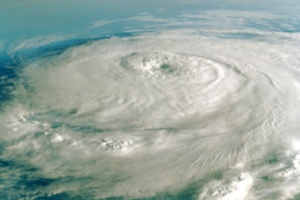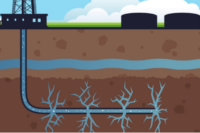 The Southeast Louisiana Flood Protection Authority – East (SLFPA-E) has filed a lawsuit alleging that approximately 100 companies cut at least 10,000 miles of oil and gas canals and pipelines through the state’s coastal lands – lands that protect most of the greater New Orleans area from catastrophic flooding.
The Southeast Louisiana Flood Protection Authority – East (SLFPA-E) has filed a lawsuit alleging that approximately 100 companies cut at least 10,000 miles of oil and gas canals and pipelines through the state’s coastal lands – lands that protect most of the greater New Orleans area from catastrophic flooding.
The SLFPA-E says the companies are obligated by law to repair the damaged environmental buffer zone.
A diseased ecosystem
According to the petition, “Oil and gas activities continue to transform what was once a stable ecosystem of naturally occurring bayous, small canals, and ditches into an extensive – and expanding – network of large and deep canals that continues to widen due to Defendants’ ongoing failure to maintain this network or restore the ecosystem to its natural state. That canal network continues to introduce increasingly larger volumes of damaging saltwater, at increasingly greater velocity, ever deeper into Louisiana’s coastal landscape and interior wetlands. The increasing intrusion of saltwater stresses the vegetation that holds wetlands together, weakening – and ultimately killing – that vegetation. Thus weakened, the remaining soil is washed away even by minor storms. The canal network thus comprises a highly effective system of coastal landscape degradation. The product of this network is an ecosystem so seriously diseased that its complete demise is inevitable if no action is taken.”
Much of the devastation caused by Hurricane Katrina was attributed to a loss of wetlands in the area.
Created by the Louisiana legislature in 2006 after Hurricane Katrina, the SLFPA-E is charged with ensuring the physical and operational integrity of the regional flood risk management system, and to working with local, regional, state, and federal partners to plan, design, and construct projects that will reduce the probability and risk of flooding for the residents within its jurisdiction. The Authority operates and maintains the complex system of levees, floodgates, seawalls, and jetties that protect about a million people and property in the greater New Orleans region
Extorting money from the industry
Don Briggs, president of the Louisiana Oil and Gas Association (LOGA), said the suit is an effort to extort money from the oil and gas industry.
“The idea of ‘Throw me something, Mista’ reaches far and wide across our state as Louisiana is now a sue-happy legal climate,” said Briggs. “Whether it is Legacy Lawsuits, the BP claims or now this ridiculous claim by the Flood Authority, the idea remains the same: drain as much money from the oil and gas industry as possible. Mr. Gladstone Jones, the lawyer representing the Flood Authority, said with his own mouth in the New York Times that the plaintiffs would be seeking damages equal to “many billions of dollars.”
"We want them to do what they said they’d do"
John M. Barry, vice president of the SLFPA-E, said the buffer of land and marsh forms the “first defensive perimeter” that cuts down hurricane storm surges before they reach the levees.
“The industry has taken about $470 billion of the state’s natural resources during the past 20 years, and we ask that it pick up its share of the increased costs of flood protections required to offset the loss of protective coastal wetlands.
“We want energy companies to fix the part of the problem they caused – and which they promised to address. We want them to do what they said they’d do.”
More than 1,900 square miles lost
The lawsuit seeks abatement and restoration of the coastal lands, including backfilling and revegetating of canals dredged and used by the defendants, and appropriate abatement and restoration activities such as wetlands creation, reef creation, land bridge construction, hydrologic restoration, shoreline protection, structural protection, bank stabilization, and ridge restoration.
The United States Geological Survey cites oil and gas activities among the primary causes of coastal land loss. According to conservative estimates, since 1932, the state has lost more than 1,900 square miles of coastal lands, enough to cover the state of Delaware, and 700 more square miles are expected to be lost in coming decades.
Loss and ruin
Jones – the Jones, Swanson, Huddell, and Garrison, LLC lawyer mentioned by Briggs, said in a statement; “For decades, oil and gas companies have received thousands of permits to dredge industrial cuts, canals and pipeline rights of way into Louisiana's coast. Industry regulations and the law are clear: these sites must be protected or repaired, but there’s little, if any, evidence that energy companies fulfilled those obligations. Instead, we have a record of coastal land loss and ruin.”
Oil and gas industry creates jobs
Complicating the issue is the fact that the oil and gas industry is a major economic force in Louisiana, accounting for more than 310,000 jobs in 2009 and an estimated $78 billion impact in 2011.
The LOGA’s Briggs said SLFPA-E is suing the industry “that is providing steady growth and stable jobs in a flailing economy.”
He said that many factors contribute to the erosion of Louisiana’s coast, and that the oil and gas industry’s contribution is but a small percentage of the problem.
“Yearly hurricanes and the Mississippi River changing paths many times over the decades play the majority role in erosion,” said Briggs.



